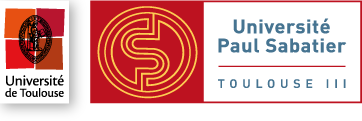Neural network applications to extrapolate and forecast seasonal biogeochemical content in the Tropical Atlantic
Encadrants:
- Julien Jouanno, DR IRD
julien.jouannoNO SPAM -- FILTER@NO SPAM -- FILTERlegos.obs-mip.fr - Rachid Benshila, IR CNRS
rachid.benshilaNO SPAM -- FILTER@NO SPAM -- FILTERlegos.obs-mip.fr
Sujet du stage
Modeling and forecasting the Sargassum proliferation and strandings that have been affecting the coasts of the Caribbean, Gulf of Mexico and Western Africa since 2011 are essential for designing effective integrated risk management strategies and is a strong and pressing demand from the civil society.
The ANR project FORESEA, led by LEGOS, laid the foundation for the development of a seasonal forecasting system (https://sargassum-foresea.cnrs.fr/sargassum-forecast) which includes a mechanistic modeling of the Sargassum populations (referred to as NEMO-Sarg model, Jouanno et al. 2021) that implement the biology and complex drift properties of the Sargassum rafts and integrates the previsibility of the regional climatesystem (atmosphere and ocean dynamics). Up to know there are no biogeochemical seasonal forecast available to the oceanographic community, so macronutrients (NO3, PO4, NH4) that feed Sargassum growth in the model are prescribed using a model climatology. This has been identified as a weakness of the system and the challenge of this internship is to remedy it by working upstream on a statistical forecast of biogeochemical fields.
More precisely the objective will be to evaluate the feasibility and performance of a statistical prediction of surface macronutrients from modeled physical fields (temperature, salinity, mixed-layer, thermocline depth, shortwave radiation). For this, methods from I/A will be exploited. The strong response of surface chlorophyll to major climatic events in the tropical Atlantic (Chenillat et al. 2021) suggests that the main biogeochemical variables are well correlated with large-scale physical conditions, giving hope that the objectives can be met.
The statistical prediction will be based on a neural network that has already revealed its ability to extrapolate biogeochemical fields from physical fields (e.g. Fourier et al. 2020, Sauzede et al. 2016). The training is organized in three main steps:
- Machine-learning from modeled fields. The learning here will be based on an interannual physical-biogeochemical NEMO-PISCES reference simulation over the period 2008-2020. This step will allow toset up the methodological aspects of neural network in a simple and gridded framework and to get acquainted with the dynamics of the Tropical Atlantic.
- Machine-learning from in-situ campaigns. First, a database will be built from biogeochemical measurements of PIRATA (France and USA), ATM, as well as from the Coriolis database (Bio-ARGOs), available over the last 20 years. Then, this database will be used to extrapolate surface biogeochemical field at the basin scale over the last 20 years, using physical fields from the model reanalysis Glorys12.
- Seasonal forecasting. A seasonal biogeochemical forecast will be developed and will rely on the methods developed for (1) or (2). In this case, the system will be tested using physical fields obtained from SEAS5 (ECMWF seasonal forecasting system) in reforecast mode for the period 2008-2020.
This internship will require above all autonomy in computer science, an interest in programming and I/A methods and a very good knowledge of the Python environment.
Références
- Chenillat, F., Illig, S., Jouanno, J., Awo, F. M., Alory, G., & Brehmer, P. (2021). How do Climate Modes Shape the Chlorophyll‐a Interannual Variability in the Tropical Atlantic?. Geophysical Research Letters, 48(14).
- Fourrier, M., Coppola, L., Claustre, H., D’Ortenzio, F., Sauzède, R., & Gattuso, J. P. (2020). A regional neural network approach to estimate water-column nutrient concentrations and carbonate system variables in the Mediterranean Sea: CANYON-MED. Frontiers in Marine Science, 7, 620.
- Jouanno, J., Benshila, R., Berline, et al..: A NEMO-based model of Sargassum distribution in the Tropical Atlantic: description of the model and sensitivity analysis (NEMO-Sarg1.0), Geoscientific Model Development, 14(6), 4069-4086
- Sauzède, R., Claustre, H., Uitz, J., Jamet, C., Dall’Olmo, G., d’Ortenzio, F., … & Schmechtig, C. (2016). A
neural network‐based method for merging ocean color and Argo data to extend surface bio‐optical properties to depth: Retrieval of the particulate backscattering coefficient. Journal of Geophysical Research:Oceans, 121(4), 2552-2571.









